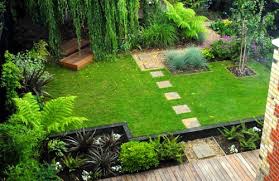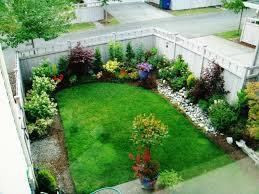Garden design is the art and process of designing and creating plans for layout and planting of gardens and landscapes. Garden design may be done by the garden owner themselves, or by professionals of varying levels of experience and expertise. Most professional garden designers have some training in horticulture and the principles of design, and some are also landscape architects, a more formal level of training that usually requires an advanced degree and often a state license. Amateur gardeners may also attain a high level of experience from extensive hours working in their own gardens…..

Line is one of the most important and useful of all design elements. Everything in the garden involves line. Think about the trunk of a tree, the distant horizon, the line created when a lawn ends and the adjacent woods begin. A sidewalk, driveway, or fence is a clear and readily accessible line in the landscape. As you plan and design your garden, always consider the line that is created by whatever you are adding.

There are four main ways to describe lines: curved, straight, horizontal, and vertical. None is more important than the others -- each has different effects. Strong lines can draw your eye into the landscape, directing both where people look and where they go.

Curved lines shape informal garden beds and add interest to pathways. Straight lines evoke a sense of order and a crispness that is more formal.
Soothing horizontal lines create a sense of stability. Think of the ocean and how its wide expanse meets the sky, creating an irrefutable sense of peacefulness and majesty. Vertical lines project a sense of strength and movement.

No matter which types of line you use, be aware that lines lead the eye. Lines going away from you on the ground draw you forward. Horizontal lines on the ground slow you down. Vertical lines lead the eye up and out of the garden. Curving lines take the eye on an intriguing journey. All are desirable. It's up to you to know where the lines will lead you or your eye and what you will see when you get there.
A landscape without strong, contrasting forms becomes as confusing as a melody without rhythm. The form and shape of plants and other objects in the garden work to divide space, enclose areas, and provide architectural interest. Grouping plants displays their shapes and creates various effects.

Round forms, such as boxwood or barberry shrubs, for instance, add definition and stability to a mixed border. A series of mounded forms creates an undulating rhythm.
Repeated, narrow verticals also add stability. Alone, an upright arborvitae or a thin cactus looks awkward. Clustered, they appear well-placed. The strong uprights of a fence add a sense of security and completeness.
So Call NOW and talk to Vivienne….
0419 715 935
or email for your project to become reality...
